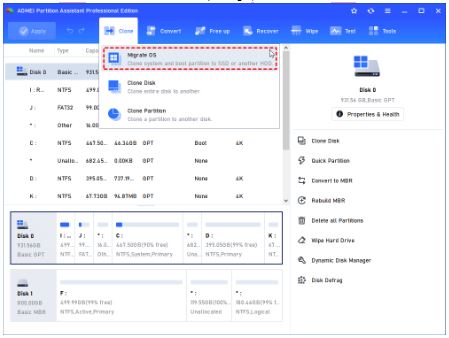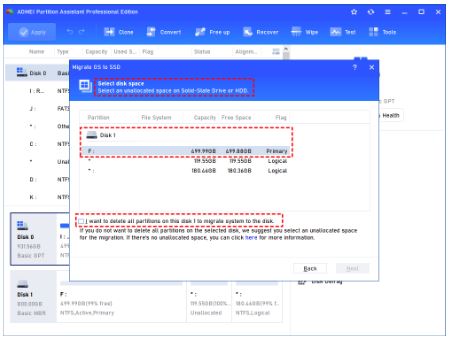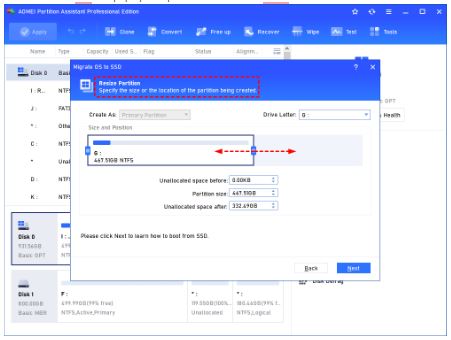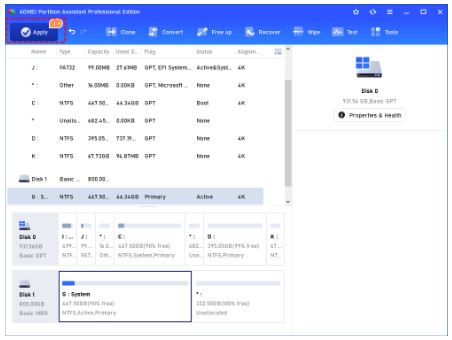Hot Stories
Recent Stories
Safely & Easily Move Windows 10 to SSD without Reinstalling
Posted by Thandiubani on Wed 29th May, 2024 - tori.ngCan I move Windows 10 to SSD to improve my PC performance? If you also have this question, here is a post to help you and lead you safely and easily migrate OS to SSD.
When an operating system migrates, it can refer to either the transfer of a computer system managed by one OS to another, or the migration of the OS itself to a new hard drive, SSD, or media carrier. Manually migrating OS contents or cloning the Windows 10 OS to an SSD are both viable options.
Then, why some users wish to move Windows 10 to SSD? How does OS migration improve PC experience? And how can you safely perform Windows migration? Don’t worry, all you need is here, in this post.
Why would you need to move Windows 10 to SSD?
If your computer is encountering difficulties in simultaneously loading large files or documents, running multiple applications, or simply seeking to increase performance, the most reliable course of action is to upgrade your old HDD drive to an SSD.
This is the merits of SSD. SSD has numerous advantages over HDD, including the absence of noise and moving elements and a reduced likelihood of damage. The read/write performance of SSD is particularly rapid. To increase the speed of your computer, an SSD would be an excellent option for the operating system disk.
After installing Windows 10 on an HDD for long, you wish to optimize performance by booting your computer from an SSD. Typically, the simplest course of action in this situation is to conduct a clean Windows installation on the SSD. This approach, however, is not the optimal solution. Reinstalling an operating system is a laborious and time-consuming process due to the necessity of reinstalling applications and the loss of data stored on the C drive.
If you prefer not to perform a new operating system installation on an SSD, it is possible to transfer the existing Windows 10 to the SSD without reinstalling the operating system. The option to migrate Windows 10 to SSD is your best option.
Safe OS migration tool—AOMEI Partition Assistant
To ensure secure and effortless booting of your computer, the most recommended approach is to utilize OS migration software to perform a system clone and transition from Windows 10 to SSD. Absolutely, AOMEI Partition Assistant is a powerful tool for disk management, partition resizing, and OS migration.
▶ Why choose AOMEI Partition Assistant:
- User-Friendly Interface: AOMEI Partition Assistant provides an intuitive and user-friendly interface. Straightforward step-guide makes it easy for users to migrate their operating system without much hassle.
- Reliable OS Migration: This robust tool allows users to migrate their Windows 10 operating system to a new SSD without reinstalling Windows and without losing any data. Users can enjoy familiar OS settings as the same as the original without setting anything.
- Partition Management: Apart from OS migration, AOMEI Partition Assistant also offers a wide range of partition management tools such as resizing, merging, splitting, formatting, and creating partitions.
- SSD Optimization: It helps in optimizing SSD performance, ensuring that the new SSD performs efficiently with the Windows 10 operating system.
- Clone Wizard: AOMEI Partition Assistant comes with a Clone Wizard that simplifies the process of migrating the OS from HDD to SSD and how to clone a hard drive to another hard drive, ensuring that even less tech-savvy users can perform the task easily.
How to move Windows 10 to SSD
Before we start, make sure you:
1. Connect the SSD to your Windows 10 computer. Typically, desktops have extra SSD disk bays, but to migrate Windows 10 to SSD on laptops, you may need a USB-SATA cable.
2. If migrating Windows 10 from MBR to GPT, make sure your motherboard supports EFI/UEFI boot mode. Otherwise, the cloned SSD won’t boot.
Now, here is the guide.
Step 1. Install and open AOMEI Partition Assistant Pro. Click on "Clone" > “Migrate OS”. An introduction about this wizard will come into your sight, read it and click “Next”.

Step 2. Select the unallocated space on SSD as the destination location and then click “Next”.

Step 3. You are able to resize the system partition on this page. Then a note on how to boot Windows 10 on SSD will pop up. Keep it in mind and click “Next”.

Step 4. Confirm all operations and now the D: drive is the cloned Windows 10. Then click on “Apply” > “Proceed” to execute the Windows 10 OS migration to SSD.

To sum up
Utilizing a specialized cloning utility is highly advantageous when moving Windows 10 to SSD. AOMEI Partition Assistant streamlines the process of data migration and disc cloning for both home users and IT professionals by providing cloning software that is intuitive, fast, secure, and dependable. Furthermore, full system migration can be initiated by transferring complete data and settings, eliminating the need to reinstall applications, modify settings, or contend with unallocated space on the new disc, in addition to transfer-OS operations.
Top Stories
Popular Stories
Stories from this Category
Recent Stories






















































